If you’re considering adding a backyard pond to your home, you probably have a lot of questions. Luckily, we’ve compiled the twelve most frequently asked questions about backyard pond construction. Keep reading to learn more!
1. How much does it cost to build a backyard pond?
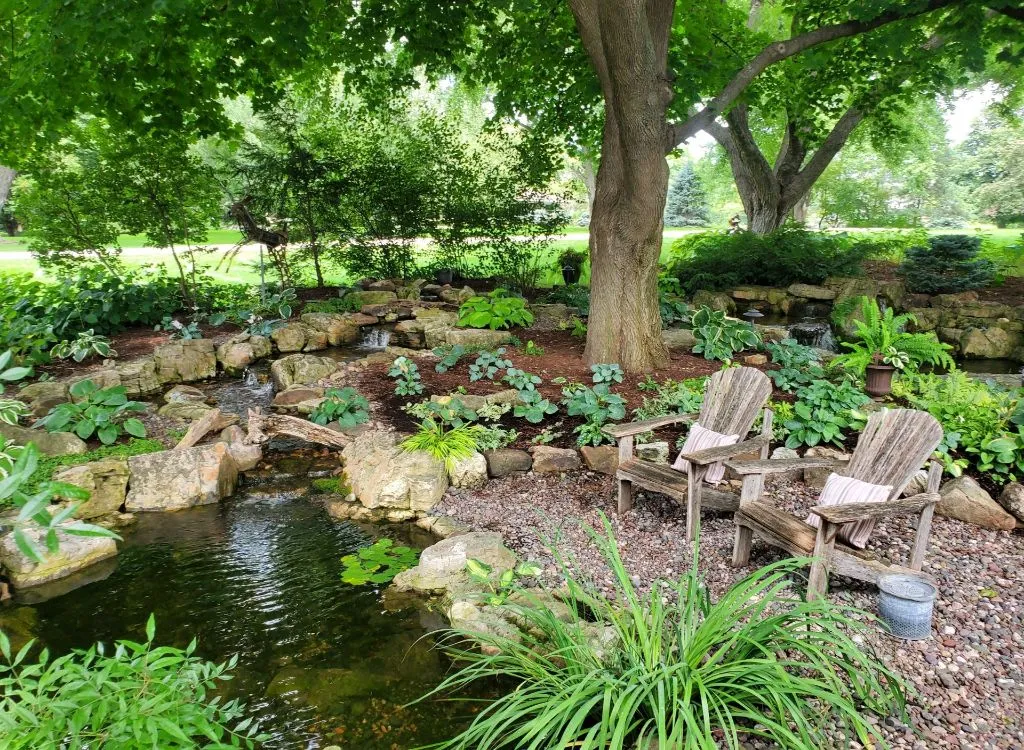
Backyard pond construction can cost anywhere from $500 to over $200,000. The cost to build a pond depends on factors such as:
- Size
- Depth
- Additions
- Materials
- Your contractor
- And more
2. What are the different types of backyard ponds I can build?
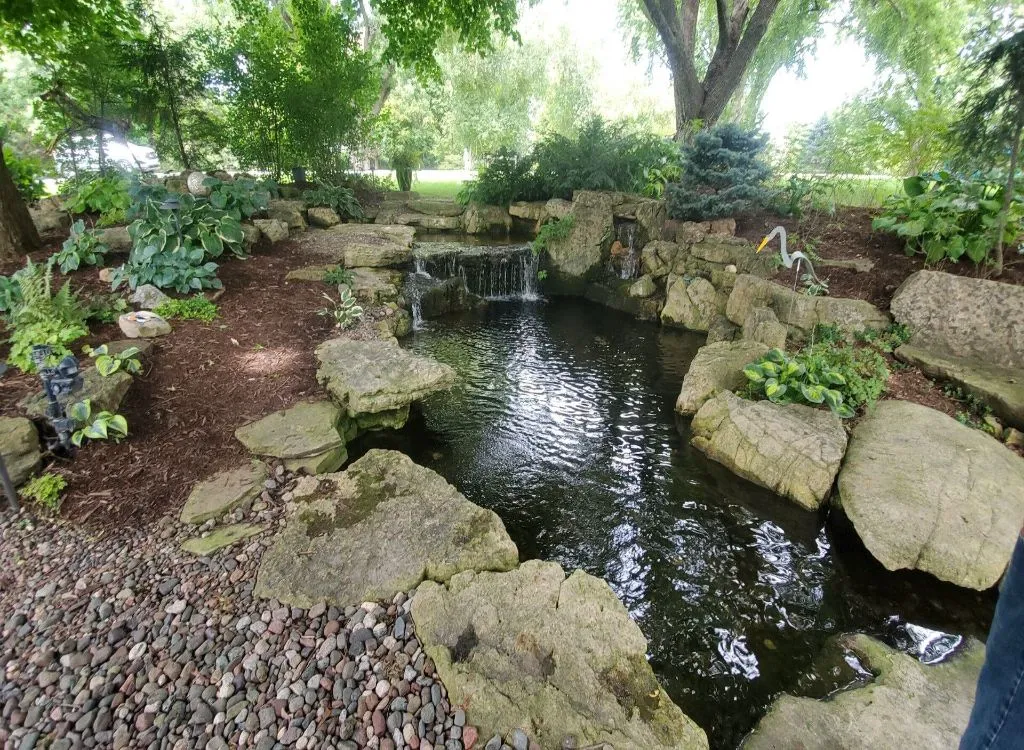
Preformed ponds are the easiest type of pond to install since they come in a mold that you simply have to dig out and place in your backyard. The downside is that preformed ponds are often small and not very deep, so they may not be suitable for fish or other aquatic life.
Flexible pond liner is used to create ponds too. You install them by digging a hole in the shape you want, placing a pond liner in it, and filling it with water. Liner ponds can be any size or depth, but they do require more installation time and effort than preformed ponds.
Ecosystem ponds are the most difficult to create but offer the most realistic look and least amount of maintenance. To build a natural pond, you’ll need to excavate an area, line it with rocks or boulders, and then fill it with water. Natural ponds also require regular maintenance to keep them looking their best.
Koi ponds are a type of ornamental pond specifically designed for keeping koi fish. They’re typically deeper than other types of ponds (between 3 and 6 feet), which is necessary to provide enough oxygen for the fish to breathe. They also have very steep sides so that the fish cannot escape. To build a koi pond, you’ll need to excavate the area, lining it with boulders or another type of hardscape material before adding a pond liner. Once the pond liner is in place, fill the pond with water, and then add your koi fish.
3. How do I choose a pond pump?
The first step in choosing a pond pump for your backyard pond construction project is to determine the size and flow rate you need. The size of your pond will dictate the flow rate, which is how much water the pump needs to move each hour.
Flow rate
For smaller ponds up to 1,000 gallons, you’ll want a pump with a flow rate of 100 gallons per hour (GPH). For larger ponds between 1,000 and 10,000 gallons, you’ll need a flow rate of 200 to 300 GPH. The specific flow rate you need will also depend on whether your pond has fish. If it does, you’ll want a higher flow rate to ensure they have enough oxygenated water.
Calculate pond volume
You can calculate the volume of your pond in gallons by measuring its length, width, and depth in feet and multiplying those numbers together. Once you have the volume in gallons, divide by two to determine how much water will need to be circulated each hour. This number is your pond’s desired flow rate.
Types of pond pumps
Now that you know what size and flow rate you need, it’s time to choose the type of pond pump that will best suit your needs. There are three main types of pond pumps: submersible pumps, external pumps, and solar pumps.
Submersible pumps
Submersible pumps are designed to be submerged in water. They’re typically small and compact, making them a good choice for small ponds. Since they’re small, they’re also generally less expensive than other types of pond pumps. Due to this, they tend to not have as much power, making them not as suitable for larger ponds or ponds with fish.
External pumps
External pond pumps are designed to sit outside of the pond. They offer more power than submersible pumps and can be used for larger ponds or ponds with fish. One downside of external pumps is that they’re more visible than submersible pumps. If aesthetics are important to you, an external pump might not be the right choice for your backyard oasis.
Solar pumps
Solar pumps are powered by, you guessed it, solar energy. They’re becoming increasingly popular because they’re environmentally friendly and easy to use. Simply place them in direct sunlight and let them do their work. Solar pumps are generally less expensive than other types of pond pumps, but they might not generate enough power to circulate large amounts of water. This makes them best suited for small ponds without fish.
4. What kind of pond liner should I use?
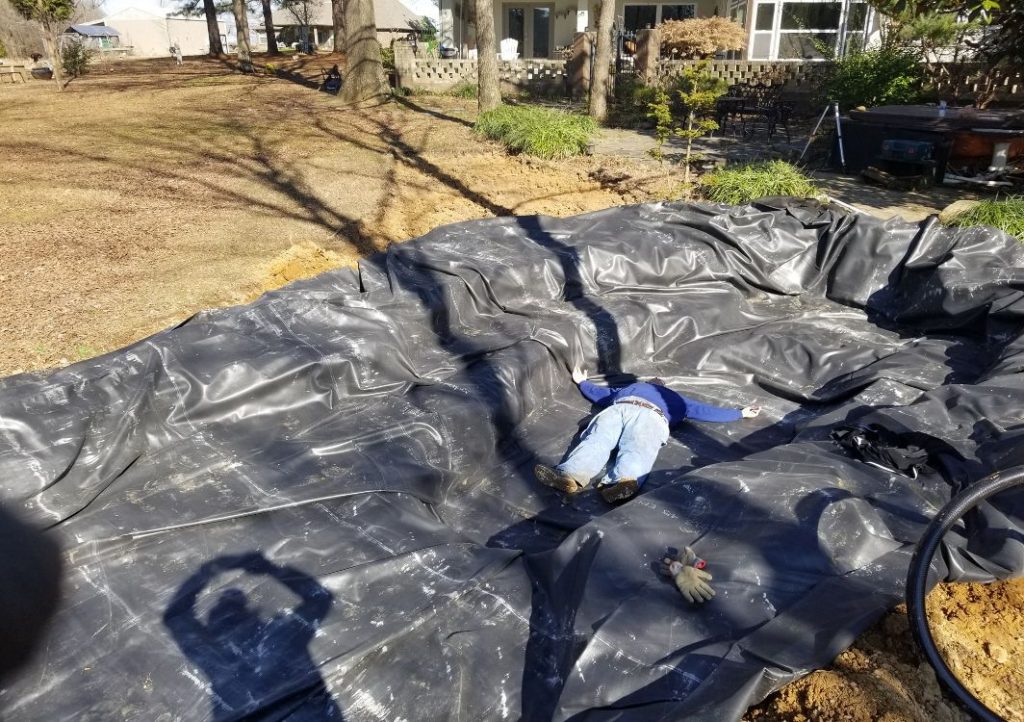
There are three main types of liners available for backyard ponds: rubber, plastic, and popolyethylene. Each has its own advantages and disadvantages, so it’s important to choose the right one for your specific situation.
Rubber liners are the most expensive option, but they’re also the most durable. If you live in an area with extreme weather conditions or if you have children or pets who might accidentally damage the liner, rubber is a good choice.
Plastic liners are less expensive than rubber but more expensive than clay. They’re also not as durable, so they might not be the best choice if you have children or pets. However, they’re lighter and easier to install than rubber liners.
Polyethylene pond liners are made from a high-density polyethylene material that’s very strong and durable. Polyethylene liners are also UV-resistant, puncture-resistant, and chemical-resistant. However, polyethylene liners can be less flexible than other options, so they may not be ideal for ponds with irregular shapes. They’re also one of the more expensive options on the market.
*Midsouth Ponds prefers using rubber liners, specifically EPDM
5. Should I put rocks and gravel in my backyard pond?

Rocks and gravel provide many benefits to backyard ponds. They:
- Make ponds look more beautiful than a black liner
- Give ponds a more natural look
- Are home to beneficial bacteria that keep your pond clean and clear
- Can anchor plants in place
Rocks can make backyard pond construction more expensive as it’s another material to buy, ship, and handle. They’re also harder to install unless you have the right knowledge and experience.
6. How deep should my backyard pond be?
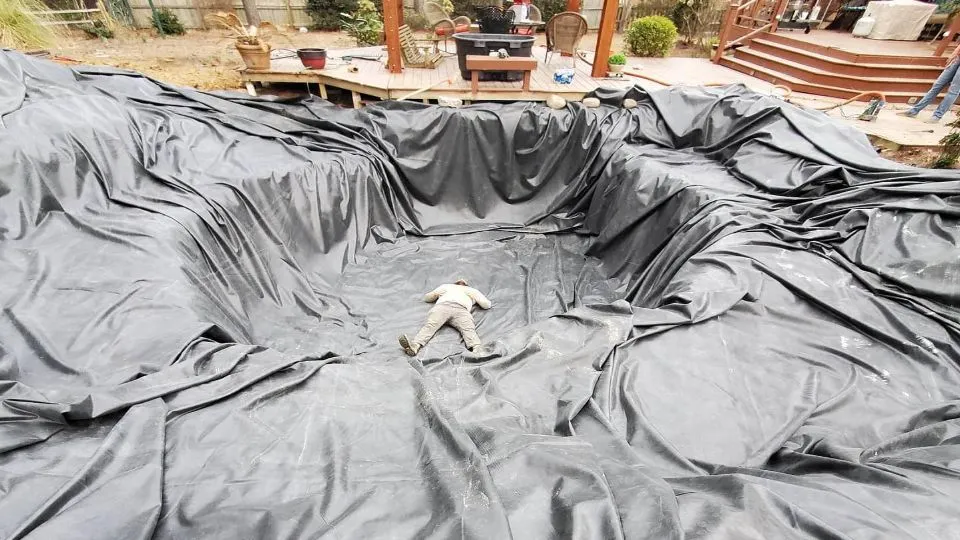
The rule of thumb is that your backyard pond should be at least three feet deep. This will ensure that your backyard pond is deep enough for fish to survive and that the water will not freeze during winter. Many backyard ponds run anywhere from 3 to 6 feet deep.
7. What is the best place for a backyard pond project?

In general, it’s best to locate your pond in a spot that gets plenty of sun and shade. This will help keep the water cool and prevent algae from growing. It’ll also give plants enough sun to thrive.
If you live in a hot climate, you may want to consider placing your pond near a tree or other source of shade. But, you may not want it too close to a tree. Roots continue to grow and can damage the liner and cause leaks.
You’ll also need to choose a location that’s level and has good drainage. This makes sure your pond is accessible for maintenance. This also helps your water feature avoid areas prone to flooding or runoff from sprinklers and rain gutters.
8. How do I keep my garden pond clean?
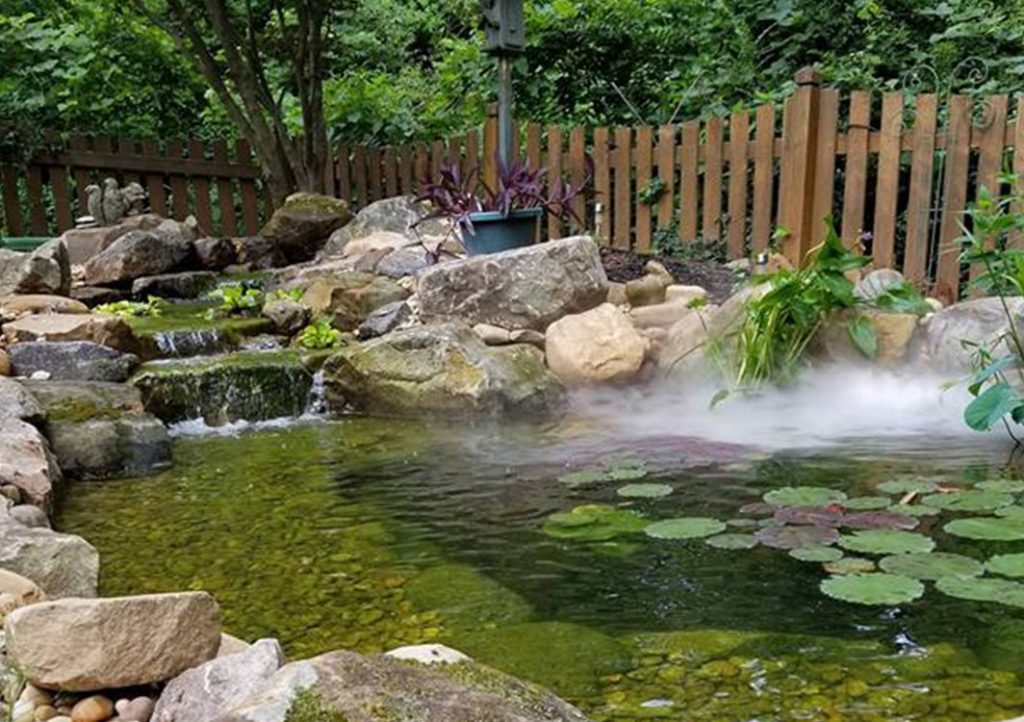
There are a few tasks you can do to keep your pond clean:
- Check and clear the skimmer baskets once or twice per week
- Have a professional clean your pond 3 times per year
- Scoop floating debris out of your pond
- Add beneficial bacteria
- Don’t overfeed your fish, and scoop out any leftover food
It’s even easier when you use the best pond cleaning supplies.
9. What kind of fish can I put in my backyard pond?

There are a few things to consider when selecting fish for your backyard pond. First, think about the size of your pond. Smaller ponds will need smaller fish, as large fish require more oxygen and space. Second, consider the climate in your area. Temperature changes and extreme weather conditions can harm fish. Finally, take into account the predators in your area. If you have cats or other small animals that could kill fish, choose species that are known for being fast and agile.
You can add fish such as koi, goldfish, and bluegills. These are some of the more popular garden pond fish.
10. What aquatic plants should I include in my garden pond?
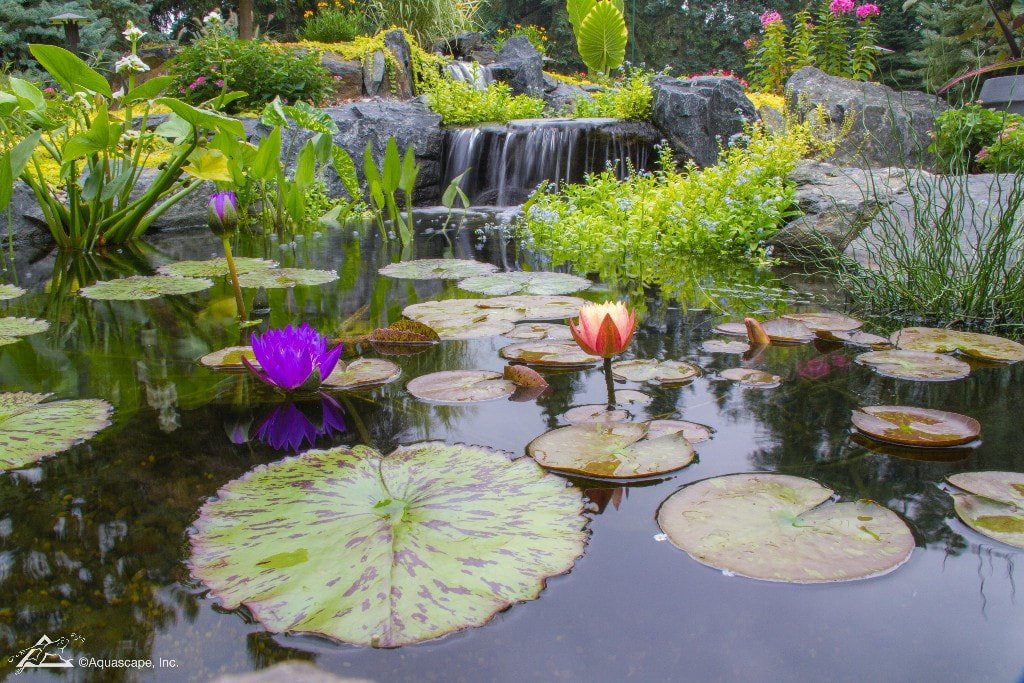
One plant that is often used in a water feature is the water lily. These flowers float on the surface of the water and provide plenty of shade for fish. They come in a variety of colors, so you can easily find one that will complement your pond’s appearance.
Another plant that does well in garden ponds is the lotus. Like water lilies, these flowers float on the surface and provide valuable shade and shelter for fish. However, lotuses have the added benefit of being very fragrant, making them a pleasant addition to any backyard pond.
If you’re looking for some underwater plants for your backyard pond, consider adding some oxygenating plants. These plants help to improve water quality by releasing oxygen into the water. As an added bonus, they also help to keep algae growth under control. Water hyacinths and water lettuces are two common types of oxygenating plants.
11. How can I naturally clean my backyard pond?
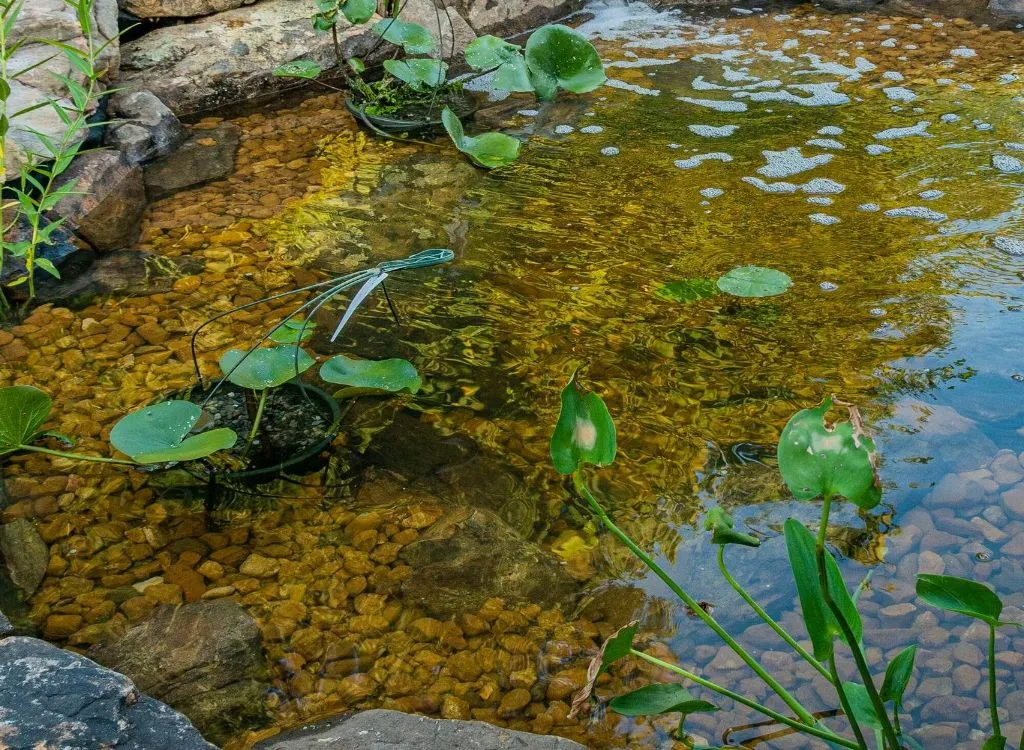
To start, make sure that the pond is properly aerated. A healthy pond will have plenty of oxygen in the water, which will help to prevent algae growth.
Add native aquatic plants and fish to the pond. These plants will help to filter out impurities, keep the pond water clean, and create a more beautiful pond. Fish will snack on algae and look beautiful doing so.
Include a source of moving water, such as a waterfall or fountain. The movement of the pond water will help to aerate the pond and keep the water circulating, preventing stagnate areas.
Add beneficial bacteria. These bacteria will consume impurities in the water and help keep the pond beautiful and clean.
12. What are the benefits of adding a fountain or waterfall?

In addition to being visually appealing, waterfalls and fountains help to aerate the water, which is essential for the health of fish and other aquatic life. This oxygenation also helps make it harder for algae to grow.
A pond waterfall or fountain will also help to circulate the water, keeping it from becoming stagnant. This helps prevent algae and insects from growing.
As a result, adding a fountain or waterfall to your garden pond can be a great way to create a more inviting and healthy environment for both people and wildlife.
Midsouth Ponds Has The Knowledge And Experience To Create The Backyard Pond You’ve Been Envisioning
If you’re interested in constructing a backyard pond, please fill out our contact form today. We would be more than happy to help you get started on your project and answer any questions that you may have. Thanks for reading!



